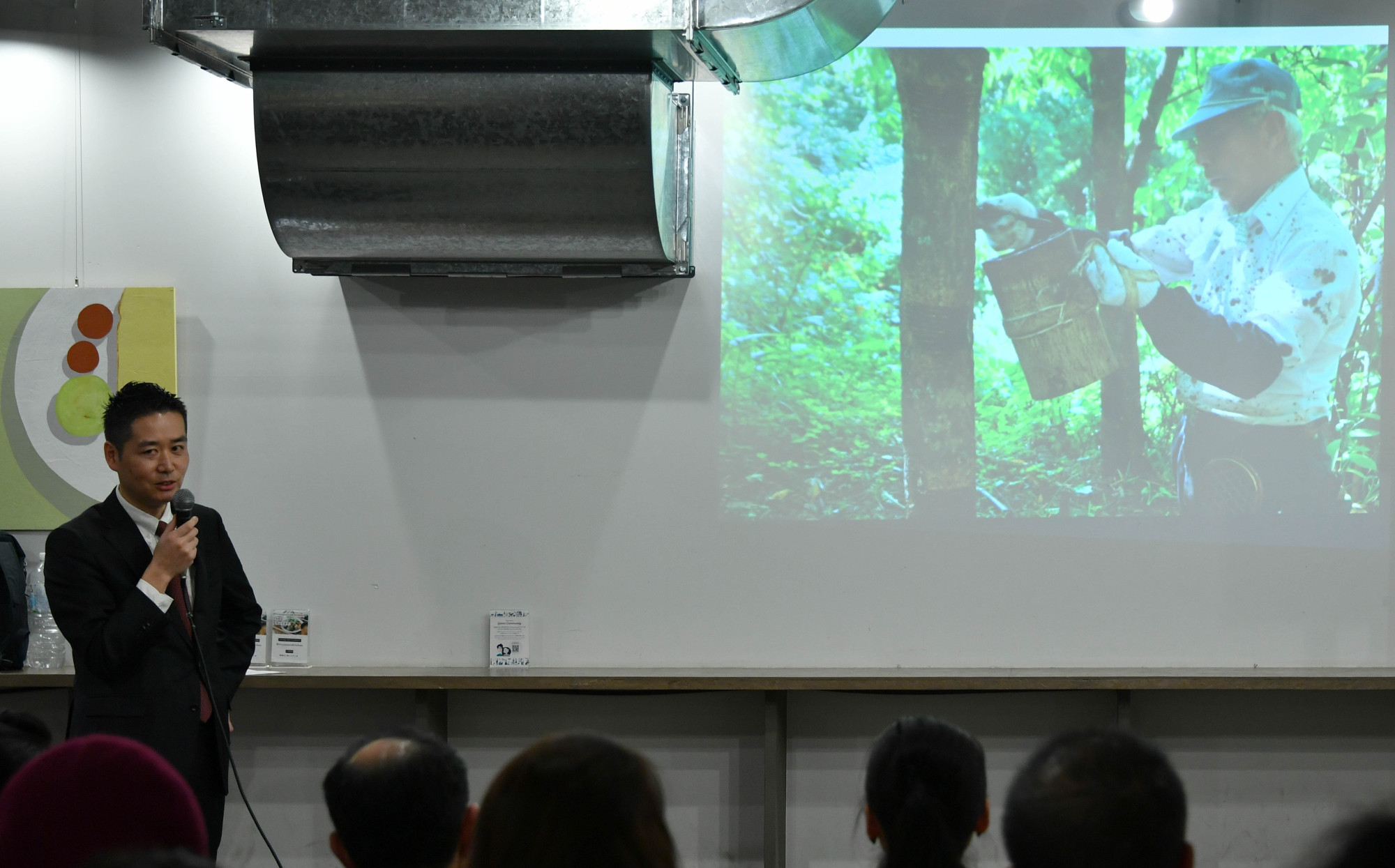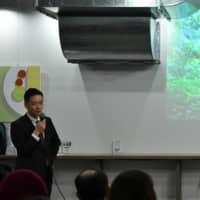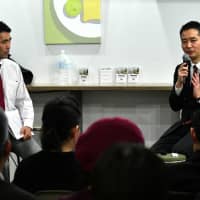The tradition of urushi (lacquer) production that almost disappeared from Japan is enjoying new life thanks to recent demand, but is also facing simultaneous hardship. Takuo Matsuzawa, president of Joboji Urushi Workshop Co. in Morioka, Iwate Prefecture, spoke about the present and future of urushi at the eighth Satoyama Cafe in Tokyo.
The talk on March 8 was co-hosted by the Japan Times Satoyama Consortium and the Chiiki Ouen (regional support) Bash community organization established by Gaiax Co. and Ouen Fes. The aim of the consortium is to support efforts that make effective use of satoyama (mountains and woods tended by residents of the adjacent communities) in rural areas.
"About 97 percent of urushi used in Japan is imported from abroad, mainly China. Only about 3 percent is domestically produced, 70 percent of which is made in Iwate," Matsuzawa said.
Urushi trees had originally been planted and used in various regions throughout Japan, but the importation of urushi that began in the Edo Period (1603-1868) continued to increase; through the era of modernization and until recent times, domestically produced urushi suffered from the overall decline in demand as well as an influx of cheaper lacquer from abroad.
If Iwate were to stop making urushi, the Japanese tradition and lacquerware would likely not survive — this fear was enough for Matsuzawa to change careers from a prefectural government employee to an entrepreneur.
"I had learned about urushi and made connections with related parties during the four years when I was engaged in the urushi industry in my former job," Matsuzawa said. To make the most of his knowledge and network for the future, he launched Joboji Urushi Workshop in 2009.
The company began selling urushi in tubes to allow customers to purchase it in amounts as small as 5 grams in an attempt to expand its usability. It also produced and sold lacquerware and unique products such as lacquered steering wheels and cellphone cases decorated with maki-e (lacquer paintings powdered with gold or silver).
The turning point came when the Agency for Cultural Affairs announced that, starting last year, only domestically produced urushi may be used to repair the country's important cultural properties.
"According to the estimate presented by the Agency of Cultural Affairs, 2.2 tons of urushi is needed for the restoration projects of important cultural assets annually," Matsuzawa said. He needed to take action to meet this new, intense demand.
"Because there is not enough urushi, we have no choice but to produce more by planting urushi trees," he said. However, the challenge began even before planting saplings. "The germination rate of urushi seeds is as low as about 10 percent. Research on how to improve this rate is still being carried out."
Earlier this year, Matsuzawa participated in establishing a nonprofit called Urushi Next that plans and organizes projects such as seed-planting events. While the company focuses on business, the nonprofit is dedicated to promoting the tradition and building networks.
Another challenge is that it takes about 15 years for an urushi tree to grow mature enough for urushikaki (the tapping process of collecting urushi sap by cutting notches in the bark).
"Of course we want to expedite the whole process, so we are collaborating with the National Institute of Technology, Okinawa College to apply the technique of collecting sap from a plant by using shock waves to squash cells when extracting lacquer from an urushi tree," Matsuzawa said.
Experiments have proven that this method not only yields more sap per tree than the traditional tapping technique, but also makes it possible to extract sap from younger trees. "We will be able to catch up with the demand if we can use trees that are only three years old," he said.
As the trees are cut down after their first and last season of urushikaki, processing the felled trees with the shock wave approach ensures nothing is wasted.
"Urushi is a unique material that is antibacterial and dissoluble by ultraviolet light," Matsuzawa said. He hopes to preserve and promote the tradition of urushi while meeting the new demand in the restoration of historical structures.
This series introduces municipalities and local companies promoting the beauty and excellence of deep Japan.



















With your current subscription plan you can comment on stories. However, before writing your first comment, please create a display name in the Profile section of your subscriber account page.